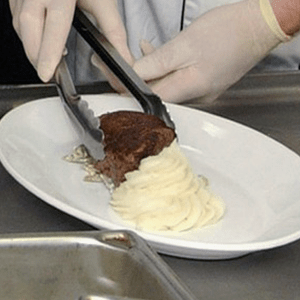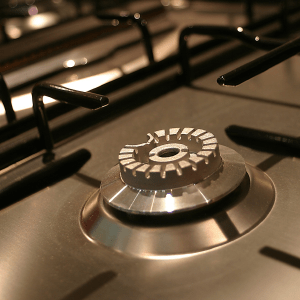Commercial Kitchen Grease Trap Cleaning Services
- Home
- Commercial Kitchen Grease Trap Cleaning Services
Cleaning Commercial Kitchen Grease Trap
A well-maintained commercial kitchen is required in order to create delicious meals. Behind the scenes, however, there’s an unexpected component that ensures everything runs smoothly: the grease trap.
This unassuming device plays a critical role in capturing fats, oils, and grease (FOG) to prevent them from clogging your plumbing and creating expensive, unsanitary messes.
[ CLEANING SERVICES ]
How Do I Know When I Need to Have the Grease Trap Cleaned?
Recognizing the signs that your grease trap needs cleaning is essential for preventing plumbing issues and ensuring efficient kitchen operations. Look out for these indicators:
- Slow Drains: If you notice that sinks or drains in your kitchen are draining slowly, it could be a sign of a clogged grease trap.
- Unpleasant Odors: Foul odors emanating from sinks or floor drains could indicate a buildup of FOG in the grease trap.
- Pooling Water: Water pooling around floor drains or sinks is a sign of a blockage in the plumbing, often caused by a full grease trap.
- Inefficient Equipment: If kitchen equipment, such as dishwashers or sinks, is not operating efficiently, it may be due to a clogged grease trap affecting water flow.
- Visual Inspection: Regularly inspect the grease trap visually. If you can see a thick layer of grease and debris, it’s time for cleaning.
To prevent these issues, establish a regular cleaning schedule based on the size and usage of your grease trap. A professional grease trap cleaning service can help you determine the ideal cleaning frequency for your kitchen.
[ CLEANING SERVICES ]
Where Are Grease Traps Located?
Grease traps are strategically placed within the plumbing system of a commercial kitchen to capture FOG before it enters the municipal sewage system. They are typically located in specific areas:
- Sink Areas: Grease traps are commonly found near sinks or dishwashing stations where FOG is likely to be generated.
- Floor Drains: In some kitchens, especially those with floor drains, grease traps may be located beneath the floor.
- Cooking Equipment: In kitchens with extensive cooking operations, grease traps may be positioned near cooking equipment like grills and fryers.
- Outside the Facility: For larger facilities, such as restaurants or food production units, grease traps may be located outside the building.
The exact location of your grease trap will depend on the layout of your kitchen and the plumbing design. Regularly inspecting and maintaining the trap is crucial, regardless of where it’s located.
[ CLEANING SERVICES ]
Equipment Required to Clean Your Grease Trap
Properly cleaning a grease trap requires specific equipment to ensure a thorough job:
- Grease Trap Pump: This device is used to remove the FOG, water, and debris from the trap efficiently.
- Scraping Tools: Scraping tools are essential for removing solidified grease and debris from the trap’s walls and components.
- High-Pressure Washer: A high-pressure washer is used to clean the trap thoroughly, removing residual grease and sludge.
- Biological Cleaners: Sometimes it’s necessary to use specialized biological cleaners to break down organic matter in the trap.
- Personal Protective Equipment (PPE): Safety gear, such as gloves, goggles, and aprons, is required for protecting workers during the cleaning process.
- Vacuum Truck: Larger commercial grease traps may require the use of a vacuum truck for efficient cleaning and disposal of waste materials.
[ CLEANING SERVICES ]
How to Properly Clean a Grease Trap
Cleaning a grease trap is not a task to be taken lightly. Proper cleaning ensures the trap functions efficiently and prevents plumbing issues. Here’s a step-by-step guide on how to clean a grease trap:
- Safety First: Ensure that you and your cleaning crew are wearing the necessary personal protective equipment, including gloves, goggles, and aprons.
- Inspect the Trap: Before cleaning, inspect the grease trap to assess the level of FOG and debris.
- Pump Out FOG: Use a grease trap pump to remove FOG and wastewater from the trap. Dispose of this waste in accordance with local regulations.
- Scrape the Interior: Use scraping tools to remove solidified grease and debris from the trap’s walls and components. Be thorough in your scraping to ensure all buildup is removed.
- High-Pressure Washing: Use a high-pressure washer to clean the trap’s interior thoroughly, removing any remaining grease and sludge.
- Biological Cleaner (Optional): Some cleaning services use biological cleaners to break down organic matter in the trap. Follow manufacturer instructions if using this type of cleaner.
- Inspect and Replace Components: Inspect the trap’s components, such as gaskets and screens, and replace any damaged or worn parts.
- Reassemble the Trap: After cleaning and inspection, reassemble the grease trap, ensuring all parts are properly secured.
- Document and Dispose: Document the cleaning process, including the date and any issues found during inspection. Dispose of waste materials in compliance with local regulations.
- Schedule Regular Cleaning: Establish a regular cleaning schedule based on your kitchen’s needs to prevent future issues.
Regular grease trap cleaning is essential for maintaining a sanitary and efficient kitchen. If you’re unsure about how to properly clean your grease trap, or if you prefer to leave it to the professionals, consider enlisting the services of a trusted commercial kitchen grease trap cleaning service.
[ CLEANING SERVICES ]
Commercial Kitchen Grease Trap Cleaning In Los Angeles
Keeping your grease trap clean is not just a matter of maintaining efficient plumbing but also ensuring a hygienic and safe kitchen environment. Recognizing when cleaning is needed, using the right equipment, understanding the trap’s location, and following proper cleaning procedures are all essential steps in this process.
By investing in regular cleaning and maintenance, you can keep your kitchen flowing smoothly and avoid expensive cleanups when something goes wrong. Contact Safe Kitchens today to clean your commercial kitchen grease trap and keep your kitchen running perfectly.




